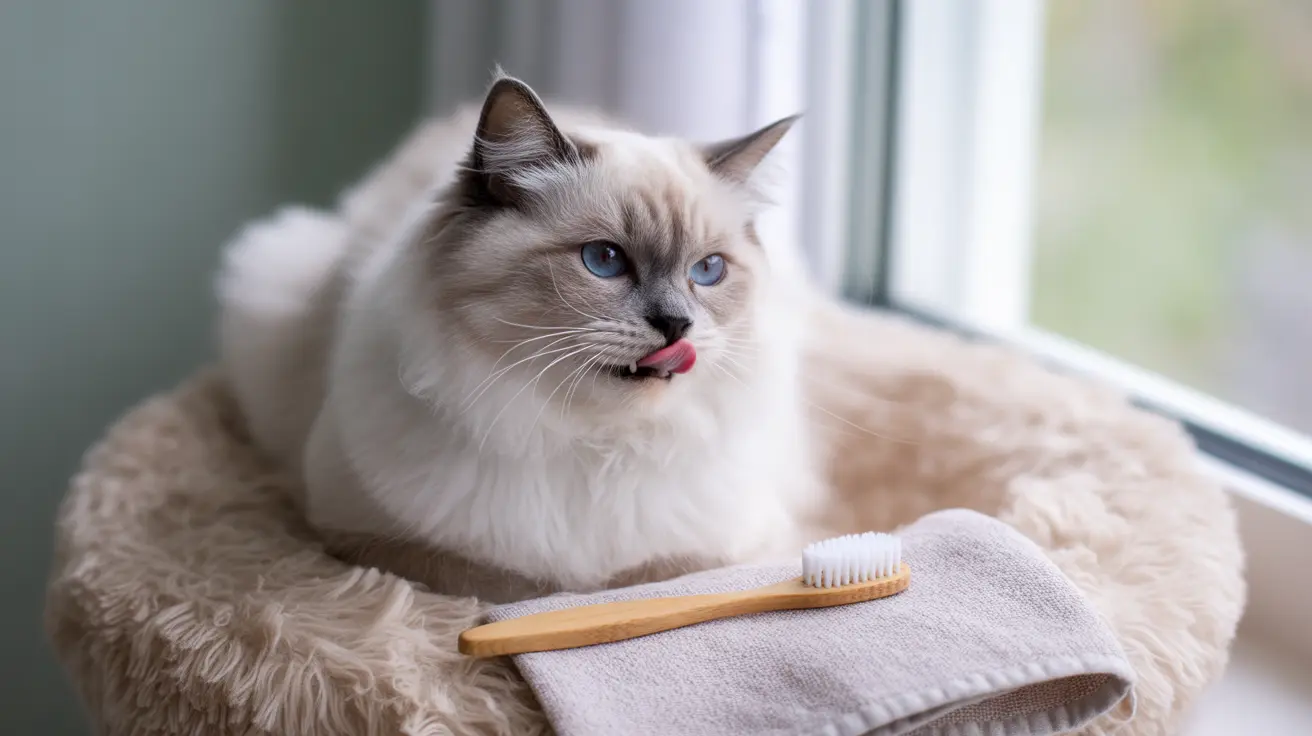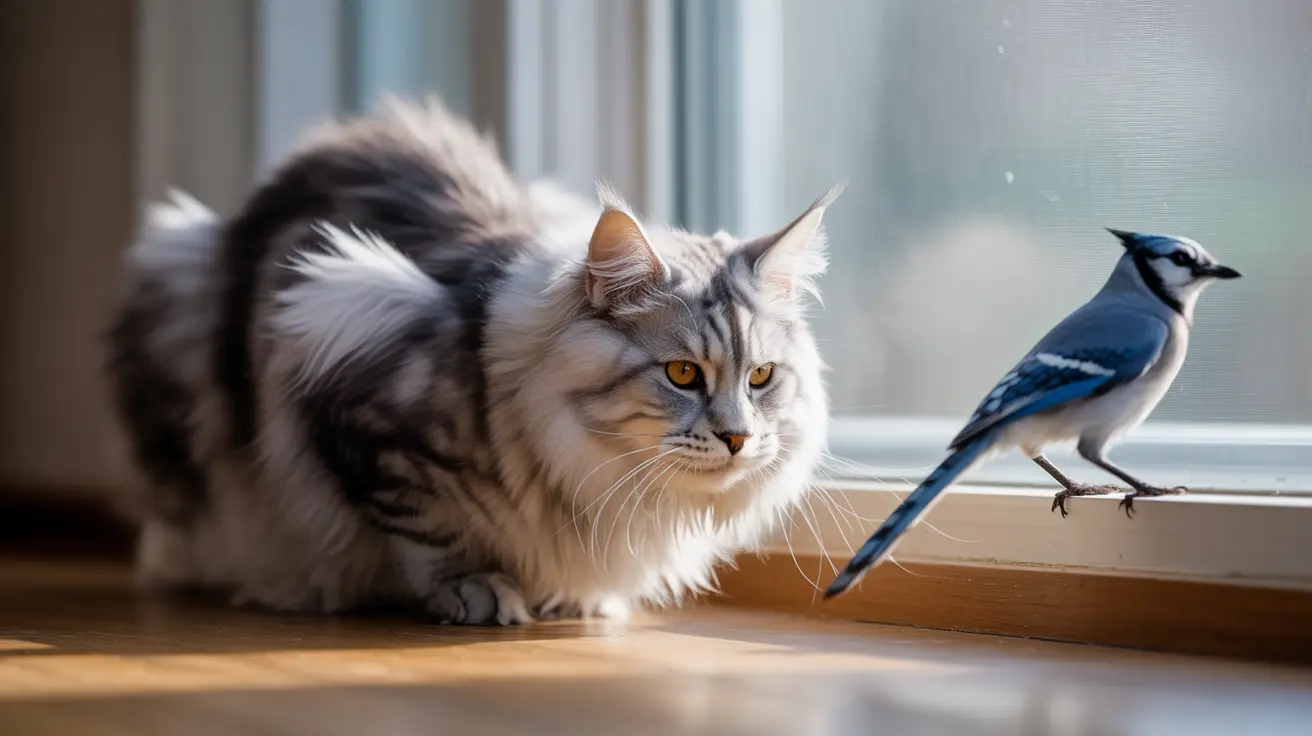Maintaining your cat's dental health is crucial for their overall well-being, and using the right cat toothbrush is the first step toward effective oral care. With various options available in the market, choosing the perfect toothbrush for your feline friend can seem overwhelming. This comprehensive guide will help you understand everything you need to know about cat toothbrushes and how to use them effectively.
From traditional designs to innovative finger brushes, each type of cat toothbrush offers unique benefits for your pet's dental hygiene. Let's explore the different options and learn how to make the best choice for your cat's specific needs.
Types of Cat Toothbrushes and Their Benefits
Cat toothbrushes come in several distinct styles, each designed to address specific dental care needs:
Traditional Cat Toothbrushes
These feature a small, rounded head with soft bristles specifically designed for feline mouths. Most measure between 5 to 6.25 inches in length, with brush heads approximately 0.5 by 0.25 inches. The compact size allows for easy maneuvering in your cat's mouth while maintaining effectiveness.
Finger Toothbrushes
These popular tools slip over your finger and often feature 360-degree bristles for comprehensive cleaning. They're particularly useful for cats who are just starting their dental care journey, as they offer better control and sensitivity feedback for owners.
Dual-Sided Toothbrushes
These innovative designs feature two different brush heads: one for general cleaning and another for targeting specific areas or removing stubborn food particles. They offer versatility and value for dedicated pet parents.
Essential Features to Look For
When selecting a cat toothbrush, consider these crucial features:
Size and Design
Look for brushes with small heads specifically designed for cats. The ideal size allows easy access to all teeth while preventing discomfort or gagging. Angled brush heads (often 15 degrees) help reach back molars effectively.
Material Quality
Choose brushes made from high-quality, BPA-free materials. Soft, rounded bristles are essential to prevent gum irritation while effectively removing plaque. Many premium options use food-grade silicone or biodegradable materials.
Ergonomic Handling
Select a toothbrush with a comfortable grip and appropriate length. This ensures better control during brushing sessions and helps maintain consistency in your cat's dental care routine.
How to Use Your Cat Toothbrush Effectively
Success in cat dental care comes from proper technique and patience:
Getting Started
Begin by introducing the toothbrush gradually. Let your cat investigate it and become comfortable with its presence. Use positive reinforcement and treats to create positive associations.
Proper Technique
Start with the outer surfaces of the teeth, using gentle circular motions. Focus particularly on the gum line, where plaque tends to accumulate. Keep sessions short initially, gradually increasing duration as your cat becomes more comfortable.
Maintaining Your Cat's Dental Tools
Proper care of your cat toothbrush ensures its effectiveness and longevity:
Cleaning and Storage
Rinse the toothbrush thoroughly after each use and allow it to air dry completely. Store it in a clean, dry place or use included storage containers to maintain hygiene.
Replacement Schedule
Replace your cat's toothbrush every 3-4 months, or sooner if the bristles show signs of wear or splaying. This ensures continued effectiveness and maintains proper hygiene.
Frequently Asked Questions
What are the best types of toothbrushes for cats, and how do they differ from human toothbrushes?
Cat toothbrushes are specifically designed with smaller heads, softer bristles, and appropriate angles for feline mouths. Unlike human toothbrushes, they're typically 5-6.25 inches long with heads measuring about 0.5 by 0.25 inches, making them perfect for a cat's smaller mouth structure.
How often should I brush my cat's teeth, and what is the recommended brushing technique?
Daily brushing is ideal for optimal dental health. Use gentle circular motions focusing on the outer surfaces of the teeth, particularly along the gum line. Keep sessions short and positive, gradually increasing duration as your cat becomes more comfortable.
Why is it important to use a cat-specific toothpaste, and what are the dangers of using human toothpaste on cats?
Cat-specific toothpaste is essential as human toothpaste contains ingredients toxic to cats, such as fluoride and xylitol. Pet toothpaste is specially formulated to be safe if swallowed and often comes in flavors appealing to cats.
What features should I look for when choosing a cat toothbrush to ensure it is safe and effective?
Look for soft bristles, a small brush head, BPA-free materials, and an ergonomic design. The brush should have rounded bristle tips to protect gums and be the appropriate size for your cat's mouth.
How can I introduce toothbrushing to a cat that has never had its teeth brushed before, and what are some tips for making the process easier?
Start slowly by letting your cat become familiar with the toothbrush and toothpaste. Begin with short sessions focusing on just a few teeth, using plenty of praise and rewards. Gradually increase the duration and coverage as your cat becomes more comfortable with the process.






